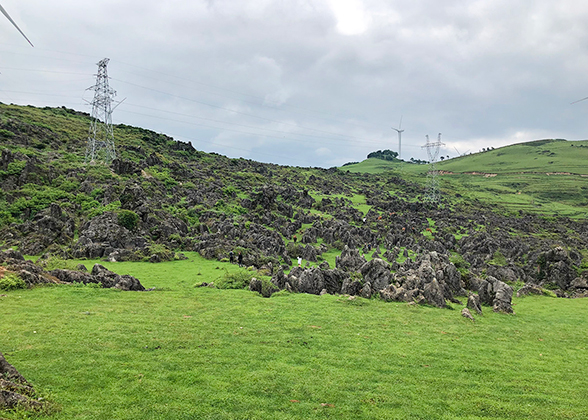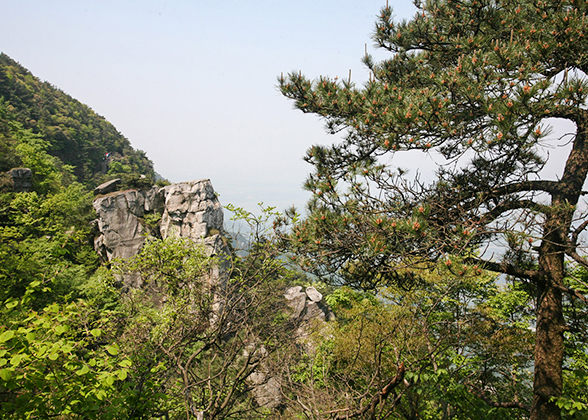Mount Miaofeng
Situated in the Mentougou District west of Beijing City, Mount Miaofeng is 31 miles (50 kilometers) from central Beijing. It occupies an area of 4,900 acres (about 2,000 hectares). The highest peak in the mountain range is 4,236 feet (1,291 meters) high. It is famous for the Goddess Temple and its temple fair, well known in Beijing since ancient times. It boasts very beautiful sceneries all year round such as the Rose Sea. Mount Miaofeng is also an ideal choice for hike and cycling.
Goddess Temple and Temple Fair
The Goddess Temple was first built in the Liao Dynasty (916 - 1125), covering an area of 1,146 square yards (958 square meters). With Mountain Gate Palace as the door, its main buildings include the main hall Linggan Hall, Ksitigarbha Hall, Yaowang Hall, the Goddess of Mercy Hall, Matchmaker Hall, the God of Wealth Hall and Grandma Wang San Hall. There are statues of five goddesses in the main hall, with the Goddess of Miaofeng, also known as Goddess Bixia, standing in the middle. Three pieces of horizontal tablets, written by Empress Dowager Cixi (1835 - 1908) of Qing Dynasty to show her thanks to Goddess of Miaofeng, hang on the shrine before. It is believed that Empress Cixi came to this temple to pray for his son, Emperor Tongzhi, who then recovered from his illness.
Traditional temple fair at Miaofeng Mountain dates back to the Ming Dynasty and boasts a history of more than 300 years. Hundreds of thousands of pilgrims around the country converge there to worship the god from lunar calendar April 1st to 15th. The temple fair integrates many activities like folk performance of pilgrims, appreciation of natural sceneries and market activities, with the objective of offering sacrifices to the Goddess of Miaofeng.
|
|
Ancient Pilgrimage Roads
Purple Glow Crevice Gorge (Yi Xi'an Tian)
Dayun Temple Ruins
Rose Sea
The Rose Festival is held in June and Peach Blossom Festival late April to early May yearly.
How to get to Mount Miaofeng
2. As there are only three M05 buses daily, visitors who miss M05 can take bus 929 from Pingguoyuan Subway Station and get off at Dingjiatan Station. Then hire a private car to the scenic area.
3. From the south square of Beijing West Railway Station, take bus 890 to Dingjiatan and then hire a private car.
Beijing Bus / Subway Search
| Admission Fee | CNY 40 Free for children under 3.9 feet (1.2m). |
| Opening Hours | 8:00 to 17:00 |
| Best Time to Visit | March-May & September-November |
- Last updated on Sep. 26, 2024 by Gabby Li -

